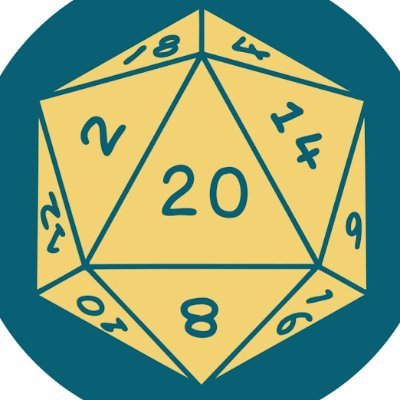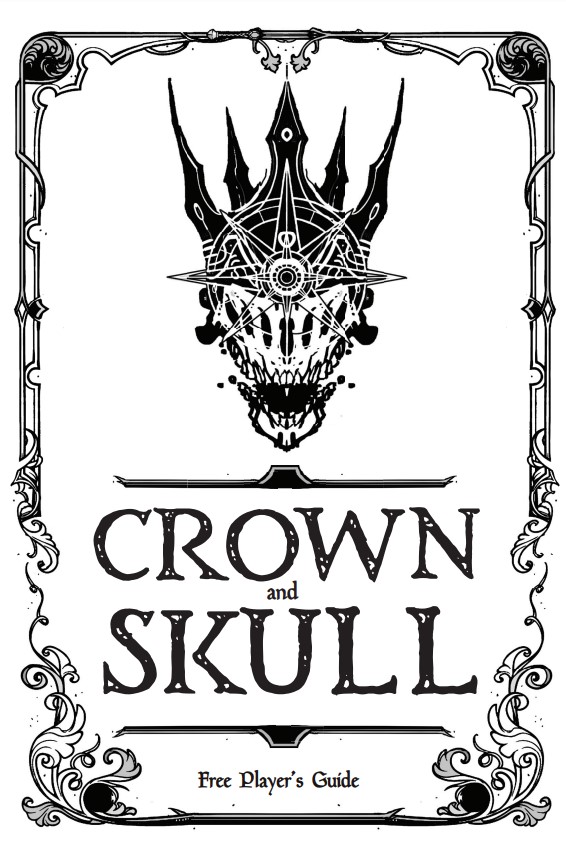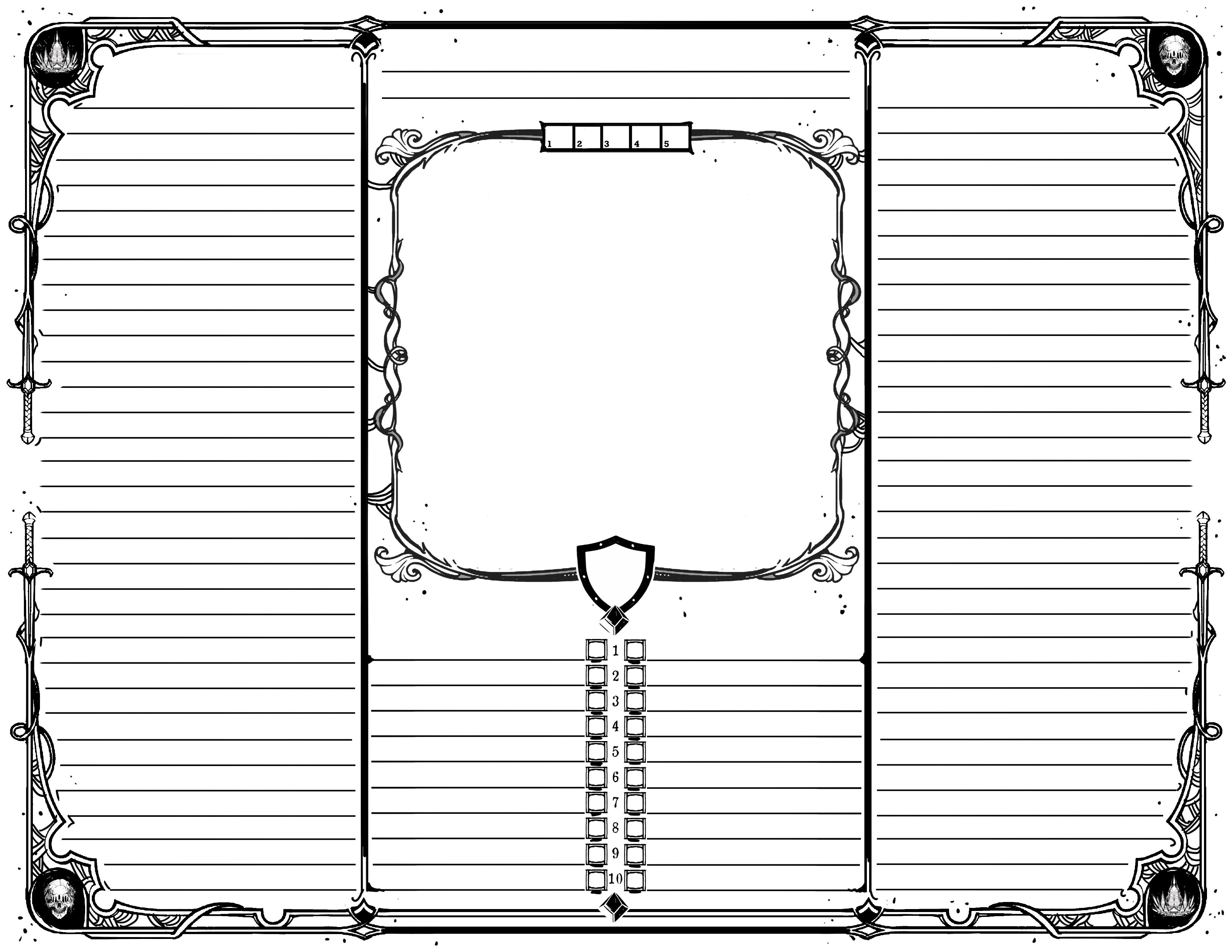


Overview
Crown & Skull is a highly flavorful game with some streamlined mechanics and tense decision making. These are the kinds of rules you expect fromt he creator of ICRPG
- Clever
- The health system, and the choice of 10 skills makes for a clever design and risk/reward syste
- Quick
- There is an emphasis on players always hitting, and knowing exactly when they go in combat
- Rich Lore
- The game mechanics and the world itself really want you to feel like heroes in this world

Resolution Mechanic
For this most part this system is a Roll under d20 System. But there are some differences in nomenclature.
Flat Rolls are D20 roll under checks. These are trying to roll equal to or beneath a specific number that is designated by the GM.
Skill Rolls - from my understanding these are technically flat rolls (roll under d20s), but the number is not designated by the GM. It is instead determined by the player’s skill in that particular activity. Yes/No Rolls - This is a d6 roll. Similar to a fortune roll in other systems. 4-6 is Yes, and 1-3 is No.
Character Design
Ancestry/Race/Kin
Elf Frog-kin Human Proudfoots Stout FolkThere are no specific Lineage mechanics in this game. There is a section that discusses the different folk who live int he world. Humans, Stout Folk, Proudfoots, Elves, and Frog-kin.
There are Hometowns. These give a lot of flavor. There are currently 3 in the game, and they give you the names of people, taverns, landmarks. Things that will help you get into the setting.
There are also fun charts to give you ideas for equipment, history/backstory, goals/objectives, etc.
There is also a discovery method for character creation. This is similar to Hard Suits, another game from Runehammer, that has a method of you discovery your skills, stats, abilities, etc through play.
Attributes
There are no attributes in this game! I repeat, there are no attributes!
Skills
There are 42 skills listed. You’ll find some of the standard ones you would expect, but also some other really interesting ones. What this game does that is great is that you only can choose 10 of them! This means that your character sheet isnt going to be flooded with skills.
The assumption is that if you are trying to do something and you don’t have a skill that would help that you are probably making a Flat Roll where the DC is determined by the GM. I’m sure there are rules for that in the GM section when the full PDF comes out.
Class / Profession
Adventurer Cleric Hoodlum Sage Smith SoldierTemplates exist in the game to make it easy for new players. There is the Soldier, Adventurer, Sage, Smith, Cleric, and Hoodlum. These come with Flaws, a Core Ability, specific Skills and a list of Equipment/or points to buy equipment.
In addition the Sage and Cleric have access to Spells.
Instead of the Templates you can choose to point buy your full character with Hero Points. You get 50pts to buy with.
Costs:
- 15 points for a Core Ability
- 1:1 for Skills (meaning a 6skill costs 6 points. But you can’t go over 18 ). You have a 10 skill max limit also
- Equipment will have custom specific points associated with them
- Flaws allow you to gain more hero points. 5 hero points for taking on a flaw
In addition to this you can buy Spells, and Companions.
Abilities/Power/Feats
Core Abilities really give you some flavor in what you do. There are 12 different Core Abilities and they range from Battlemaster and Druid to Uncanny Shot and Empath.
These core abilities give you a small highly flavorful ability, which feels like it rounds out your playstyle almost like a class would.
Protector - When using a shield, change a failed Defense roll by an ally into a success once per round, if they are nearby.
Equipment / Gear
There are 4 charts that list out basic equipment, large equipment, weapons and armor.
Most weapons are going to be in the d8/d10 range, but there are some d12s and some d4. The most expensive of these are 7 points.
Armor is going to range from +1 to +4 DEF. The most expensive being 5pts. There are some other cool concepts, like shields absorbing hits prior to attrition taking place.
Every piece of equipment has a fun mechanical note to it. There is a lot of interesting decisions in here
Custom Equipment
There is an entire custom equipment section as well, where you can design your own equipment so that you can have a highly specialized piece of armor/weapon/item. But it’ll cost you some Hero Points. There is a whole list of different Gear Effects you can add to weapons.
Advancement
Hero Points is the name of the game here. In this game, the character creation process is solely determined by how many hero points you use. Its the currency to buy equipment, unlock powers, get better at skills, etc.
You will be awarded new hero points at the end of the play session, but you can’t spend them unless in a safe place to rest. The GM can set specific thematic limitations on what players need to do in order to get specific items or spells.
Deeds & Renown
There is a nice system in place that helps the GM in terms of players becoming more known, and adds the nomenclature of Deeds & Renown to the game. Deeds equates to quests in essence, and has concrete rewards for completion (mainly Renown and Hero Points)
Renown is going to reward you with more roleplaying titles, land, etc. You are having an effect on the world itself, and there are perks to that.
Crown or Skull
The namesake of the game comes to fruition when you get 25+ Hero Points. This is not a choice of good or evil, but its a choice more of Knight/Protector vs Ronin/Masterless. There are all sorts of other perks and major thematic concepts that are wrapped into this section that I’ll let you discover. New skills, new equipment, etc
Combat
Initiative
Phase DecisionThis is fascinating. This game utilizes a Phases system. You as a player get to choose what phase you are going to be participating in. Within a specific phase if a monster and player are both going then the players go first that phase. More on phase structure below
Turns / Rounds
This shows what phases might look like on a player’s character sheet. The example shows that a player has decided to take action in phase 2. It sounds like once you have chosen your phase that you are going to be stuck in that phase until the end of combat. This is almost like choosing your initiative order, and I’m not sure how it effects tactics yet.
Monsters will attack on specific phases. Its baked into their stat blocks. Certain monsters can act on multiple phases, but no more than 3 total.
Action Economy
When the phase comes up and its your turn (I assume players can choose who goes first if they both are on the same phase) then you have a few options.
- Move: If you are going someone more than 6” away it takes your whole phase. If its just sort of side steps then it doesnt
- Action: attack, spell, skill, etc - whole phase used up
- Hurry: move and action, but all enemies get +5ATK when they try to attack you for 1 round.
Attack Mechanic
Players automatically hit. That’s right, you don’t roll for attacks. On a turn a player will just immediately roll for damage (if they chose to use their phase to attack).
They roll their damage, but the GM will subtract the DEF: score of the monster from the result. So you swing your weapon and do 5, but the Skeleton has DEF:3, then you only did 2 damage.
Defensive Mechanic
Your defensive score is going to equal 6+(total armor worn in inventory). This is important because you are trying to roll under this number. Your maximum Defense is 18.
In addition, whatever your Defense is, you will subtract the enemies ATK to determine your ability to defend. So if you have a Defense of 12, and the enemy Skeleton has ATK:3, then you need to roll a 9 or lower.
Modifications to Resolution
Critical Success and Failures. Rolling a 1 is a critical success. Rolling a 20 is a critical failure. Hero Coins are small tokens awarded by the GM to players that they can turn in for benefits. They can get a reroll, or they can max damage or some other effect. What’s cool is that players can give coins to each other, and freely distribute them. That’s a very cool concept
Resource Management
Time or Scenes
If you can rest safely for a night you will get back 1d4 of your attributes (equipment and skill slots). This is pretty brutal.
Resource
Not sure where this would go as a resource, but Companions exist in the game! They can be small animals or they can be retainers and lots in between thematically. The most important aspect is that you OR the retainer take an action. You won’t be getting double the actions on your phase turn.
Companions however will have their own skill lists which means you respectively have more versatility on your turn.
Health & Dying
Damage to the players in this game is called Attrition. This could be a pretty brutal system! You have a certain amount of skills and equipment on your sheet (10 of each). Whenever you are hurt you are going to mark these off your list! So you lose access to skills or items.
Attrition is named differently depending on what it targets:
Healing
You can restore skills with successful heals (magic, potion, first aid). You have to try and repair items.
Dying
If you get hit and have no inventory to mark then you are dying, and die at the end of the next phase 5.
Magic System
The magic system has some base spells that you can use as a player, but there is also a robust system for designing your own spells.
The base spells all have some commonality to them. Everything is touch, can be cast once before a rest, and has a 1 line explanation behind it. You can use hero points to improve these spells to do more, have more casts, have range, etc.
The tables for creating new powers are really fun. There are different groups of spells (mainly for random rolling purposes it seems). In addition to this there is a really fun spell limitations table. This has flavorful concepts behind the potential limiting effects of the new spell. Exhausting spells for instance make it so you can’t cast magic on your next round of combat.
There is also some nice tips on Lore and Creation of magic. Helping the GM potentially add story driven limitations on acquiring or using magic.
Character Sheet



